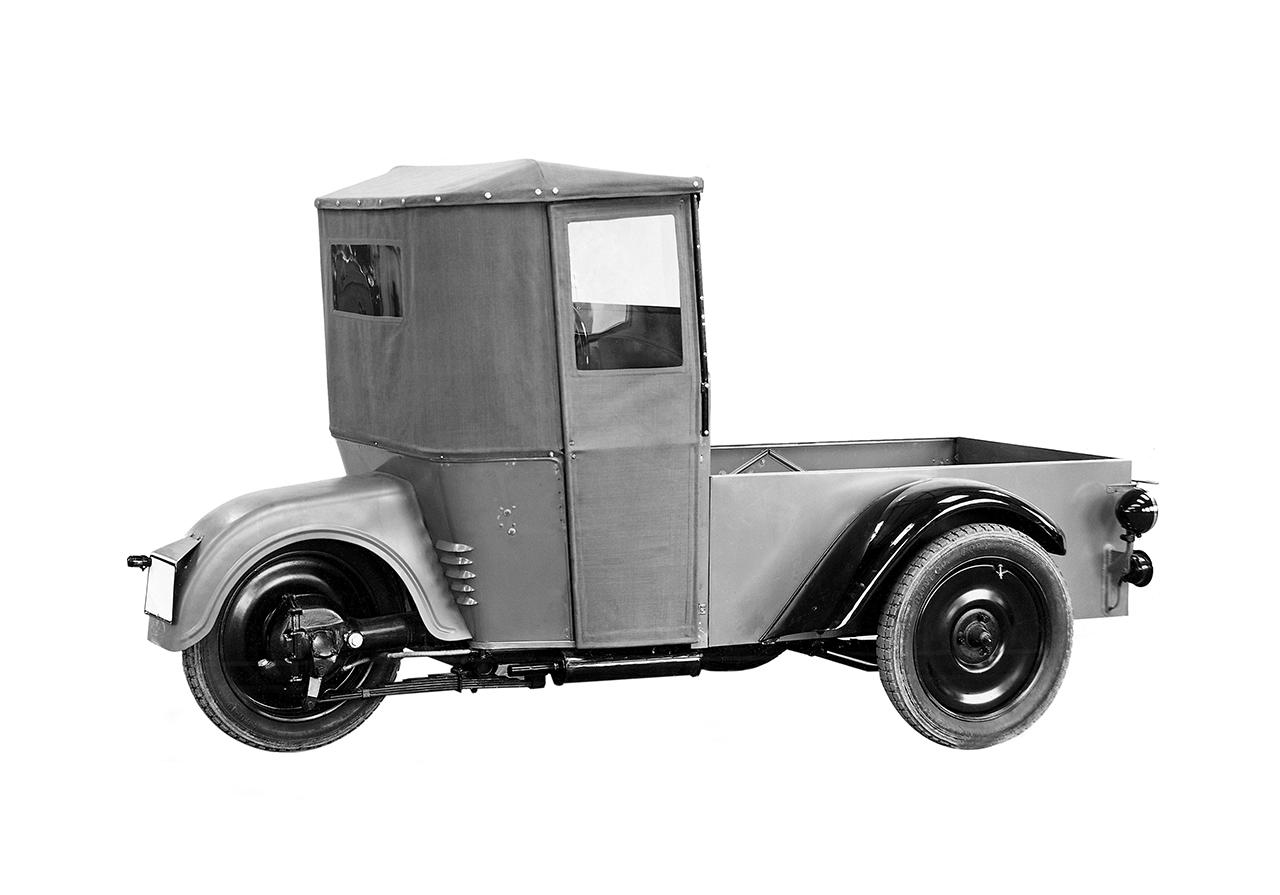BMW F 76/79
In the autumn of 1932, BMW introduced a unique chapter in its automotive history with the launch of the BMW F 76, a three-wheeler delivery van. Developed in Munich and produced in Eisenach (Thuringia), this vehicle marked an unconventional step for the brand, reflecting BMW's innovation in commercial vehicles.
In 1933, BMW expanded the offering with the F 79 model, which shared the same visual design as the F 76 but was equipped with a slightly more powerful engine. Both models were notable for their automobile-style steering wheels and the use of a sprung swinging arm to mount the rear wheel, ensuring better stability and handling.
The load-bearing platform of the BMW three-wheeler could be configured in several ways: it could be equipped with an open platform, a closed van body, or a wide payload area covered with a tarpaulin and frame, allowing for versatile use in commercial transport.
Despite the high build quality, both the F 76 and F 79 failed to achieve the level of success BMW had hoped for. Only 600 units were delivered between 1932 and 1934, and no successor model was developed, leaving the F 76/79 as a rare and curious part of BMW’s automotive history.
BMW F 76
Construction Time: 1932 - 1933
In the autumn of 1932, BMW introduced the F 76, a three-wheeler delivery van powered by a blower-cooled 200 cc engine generating 6 hp. This vehicle featured a cardan drive and was designed for light commercial use.
The F 76 came with a two-seater driver's cab, which could be enclosed upon request, providing additional flexibility for customers. The van also featured an open platform with a payload capacity of 650 kg, making it suitable for carrying goods.
Despite its solid build quality and practical design, the F 76 failed to achieve the expected sales success. By 1933, only 250 units had been produced before the more powerful F 79 model was introduced to the market, continuing BMW's experimentation in the commercial vehicle sector.
BMW F 79
Construction Time: 1933 - 1934
In 1933, BMW launched the F 79, a second version of its three-wheeler delivery van. Building on the design of the earlier F 76, the F 79 featured a 400 cc blower-cooled engine producing 14 hp, offering more power for commercial use.
The van retained the cardan drive system and the two-seater driver’s cab, which could be fully enclosed upon request. It also maintained the high payload capacity of 650 kg and was available with multiple configurations for the load-bearing platform: an open platform, a closed van body, or a wide payload area with a tarpaulin and frame.
Despite these enhancements, the F 79 also failed to achieve significant sales figures. Only 350 units were produced between 1933 and 1934, and BMW discontinued production of its three-wheeler delivery vans in 1934.









.jfif)


No comments:
Post a Comment